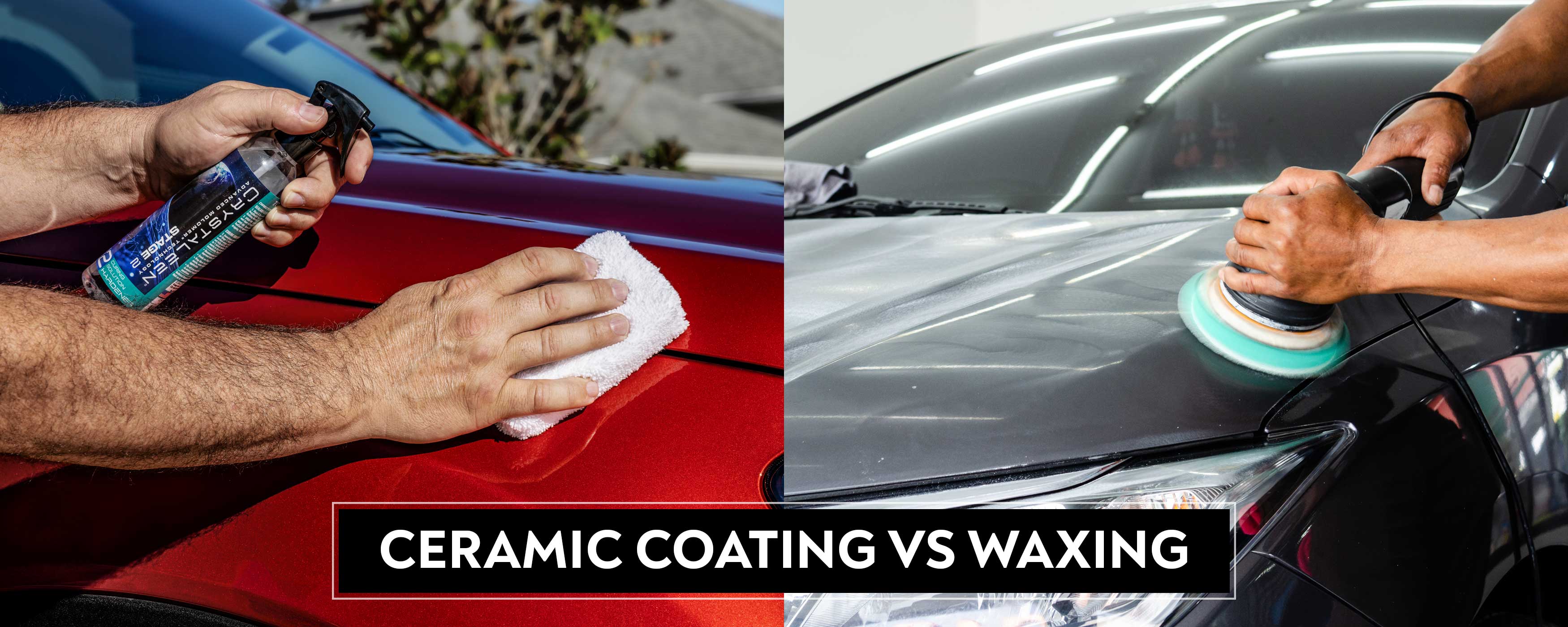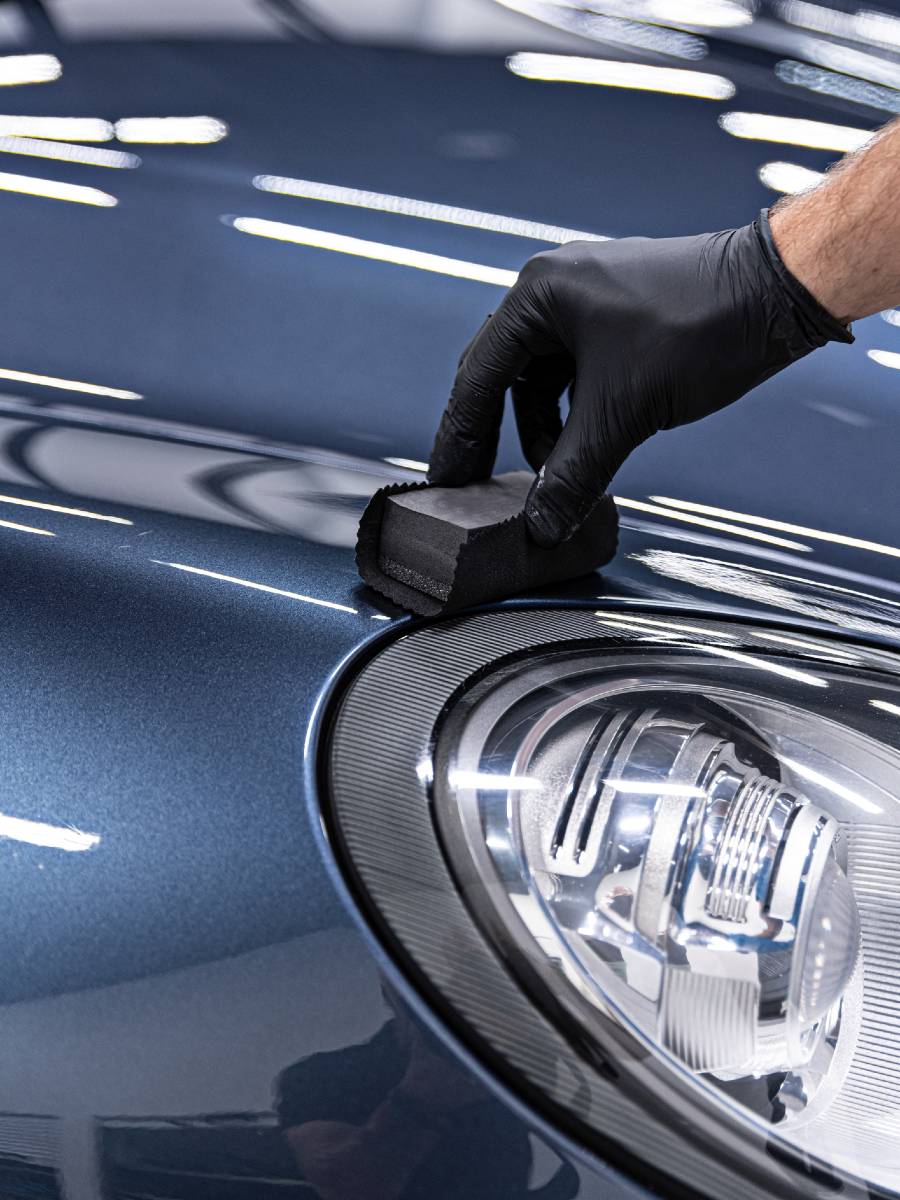Ceramic Coating: The Future of Automotive Surface Protection
Ceramic Coating: The Future of Automotive Surface Protection
Blog Article
Ceramic Finishing vs. Standard Wax: Which Supplies Much Better Long-Term Defense?
The debate between ceramic coverings and conventional wax for vehicle security has actually gathered significant interest amongst auto enthusiasts and experts alike. While both satisfy of safeguarding paint, their differences in longevity, application, and long-term upkeep costs may influence a consumer's selection. Ceramic coatings flaunt superior long life and resistance to ecological aspects, yet the intricacy of their application increases inquiries about accessibility and usefulness. As we check out these contrasting alternatives, it comes to be crucial to consider not just the immediate advantages however additionally the ramifications for automobile care in time.
Introduction of Ceramic Finishing
Ceramic coating has gained substantial appeal amongst auto fanatics and detailers alike because of its sophisticated safety high qualities. This innovative technology is developed to develop a long lasting, hydrophobic guard over a lorry's paint surface, considerably enhancing its resistance to environmental impurities such as dirt, UV rays, and chemical spots. Unlike standard wax, which offers a temporary layer of defense, ceramic layers bond at a molecular degree with the paint, offering durable toughness-- typically prolonging past two years with proper upkeep.
The application procedure includes precise prep work of the lorry's surface, including cleaning and polishing to guarantee optimum attachment. As soon as used, the layer cures to form a robust layer that not just includes depth and gloss to the paint however likewise streamlines maintenance. With its hydrophobic residential or commercial properties, ceramic layer enables water and dust to move off even more conveniently, lowering the frequency of laundries and reducing the risk of swirl marks.
In addition, ceramic layers are offered in various solutions, allowing customers to pick items tailored to their certain demands and preferences. Generally, ceramic finish represents a significant advancement in paint protection technology, providing premium performance compared to conventional alternatives.
Introduction of Standard Wax
Typically considered as a staple in vehicle care, wax works as a prominent option for those seeking an uncomplicated technique to improve and shield their automobile's paint - ceramic coating. Automotive wax usually consists of all-natural ingredients, such as carnauba, or synthetic compounds, made to develop a protective layer externally of the paint. This layer not just improves the automobile's gloss and shine but also supplies a barrier against environmental impurities
The application of wax is normally user-friendly, making it accessible for both specialists and DIY fanatics. As soon as used, wax requires a treating duration, after which it solidifies to form a safety shell.
Nevertheless, while wax is efficient for enhancing the aesthetic appeal of an automobile, it is essential to keep in mind that the protection it supplies might require much more regular reapplication contrasted to alternate products, such as ceramic layers. In general, conventional wax remains a preferred option for those prioritizing convenience of usage and instant aesthetic renovation.
Durability and Longevity Comparison
While both ceramic finishes and typical wax deal safety benefits for vehicle paint, their durability and long life differ significantly. Typical wax, generally made from natural carnauba or synthetic polymers, generally gives a protective layer that lasts about three to 6 months. This fairly short lifespan necessitates routine reapplication to preserve optimal protection.
On the other hand, ceramic coverings are crafted from innovative nanotechnology, forming a covalent bond with the paint surface area. This causes a durable, hydrophobic layer useful reference that can withstand for 2 to 5 years, depending upon the item and environmental conditions. The exceptional durability of ceramic finishes is connected to their chemical structure, which supplies enhanced resistance to scratches, UV rays, and oxidation.

Protection Against Environmental Elements
Safeguarding a lorry's paint from environmental variables is vital for keeping its appearance and value over time. Autos are constantly exposed to a range of elements, consisting of UV rays, bird droppings, tree sap, acid rain, and road gunk, every one of which can endanger the honesty of the paintwork.
Ceramic coverings give a durable protection against these ecological assailants. Unlike typical wax, which can break down swiftly under UV exposure, ceramic coatings form a long lasting, hydrophobic layer that resists the hazardous effects visit here of sunshine and toxic wastes. This advanced modern technology creates a chemical bond with the car's surface area, supplying superior protection that lasts for several years, also in rough conditions.
Conventional wax, while less complicated to apply, usually requires constant reapplication and supplies restricted resistance to impurities and UV rays. In time, it can damage down, leaving the paint vulnerable to scrapes and oxidation. In comparison, ceramic coatings keep their safety top qualities longer, considerably lowering the danger of paint damage and making sure that the automobile keeps its aesthetic appeal. As a result, ceramic layers are significantly identified as the superior choice for lasting security against environmental elements.
Application and Upkeep Distinctions
The methods of application and subsequent maintenance for ceramic coverings and traditional wax vary dramatically, influencing the total user experience and effectiveness of each item. Ceramic coatings call for a more elaborate application process, normally entailing surface area prep work that consists of washing, sanitizing, and brightening the car. Once the surface area is all set, the ceramic finish is applied in a controlled setting, commonly needing specialist competence to ensure appropriate treating and bonding to the paint.

While both items boost automobile appearance, the longer-lasting security offered by from this source ceramic coatings might validate their initial financial investment, despite the more requiring application procedure. Alternatively, conventional wax continues to be a popular option for those looking for a simpler, albeit short-term, service.

Conclusion
In final thought, ceramic coverings demonstrate significant benefits over conventional wax in regards to sturdiness and ecological security. With a life-span prolonging two to 5 years and remarkable resistance to UV rays, dirt, and chemical discolorations, ceramic coverings offer an extra reliable option for lasting lorry upkeep. Although the application procedure might call for specialist know-how, the resulting cost financial savings and decreased frequency of reapplication highlight the worth of ceramic coatings for those looking for ideal lorry security.
The dispute between ceramic finishings and conventional wax for vehicle protection has actually gathered considerable focus among automobile fanatics and specialists alike. Unlike typical wax, which provides a temporary layer of defense, ceramic finishes bond at a molecular level with the paint, supplying resilient toughness-- commonly extending past two years with proper maintenance.
While both ceramic layers and standard wax deal safety benefits for automobile paint, their resilience and longevity vary considerably. For vehicle lovers looking for long-term security, ceramic layers offer a compelling advantage over conventional wax products.
In final thought, ceramic finishings demonstrate substantial benefits over conventional wax in terms of sturdiness and environmental defense.
Report this page